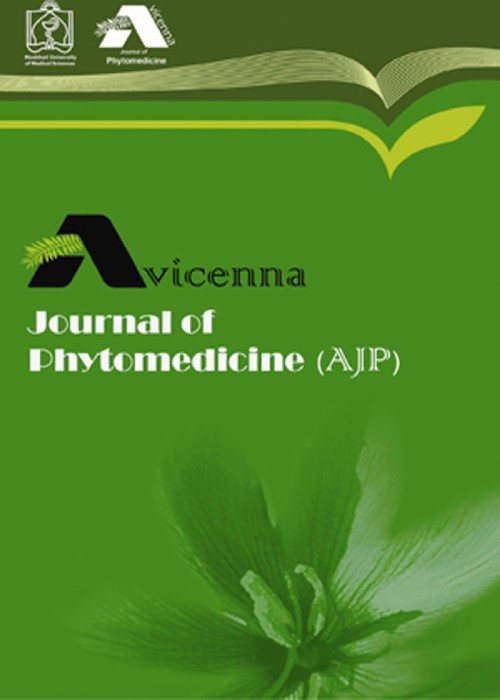Ecballium elaterium attenuates neuroinflammation in an animal model of Alzheimer’s disease through modulation of nuclear factor κB pathway
Author(s):
Article Type:
Research/Original Article (دارای رتبه معتبر)
Abstract:
Objective
Sustained inflammation, which could be promoted by Aβ aggregation and tau hyperphosphorylation, is a critical player in Alzheimer's disease (AD) pathogenesis. In the first phase, this study was designed to evaluate the anti-inflammatory properties of Ecballium elaterium (EE), as a Mediterranean therapeutic plant, and its effects on biochemical and behavioral signs of nucleus basalis of Meynert lesioned (NBML) rats, as an approved model of AD. In the second phase, we investigated the effect of EE on nuclear factor (NF)-κB pathway which is responsible for encoding proteins involved in the inflammatory cascade.Materials and Methods
Animals were divided randomly into four groups as following: control, NBML rats (AD), AD rats that were treated by high- and low-dose EE. Prostaglandins (PGs) levels were measured by enzyme-linked immunosorbent assay (ELISA) kits. Cyclooxygenase-2 (COX-2) and acetylcholinesterase (AChE) levels were assessed by fluorometric kit and Elman method, respectively. Behavioral signs were evaluated by Morris Water Maze (MWM) test and inflammatory proteins content was analyzed by immunoblotting method.Results
According to the results, treatment of NBML rats with EE fruit juice reduced PGs and cytokines more than 2-fold in comparison with AD rats through inhibition of COX-2 enzyme. Attenuation of inflammatory response in NBML rats was accompanied by reduced AChE activity (about 3-fold) and improved learning ability. Interestingly, EE reduced NF-κB expression for about 3-fold which resulted in a more than 10-fold increase in IκBα/P-IκBα ratio.Conclusion
Our results confirmed the TNF-α/cytokines/NF-κB/COX-2 pathway involves as the main inflammatory response in NBML rats. We also provided biochemical and behavioral evidence which introduces EE as an anti-inflammatory adjuvant to improve pathophysiological signs in patients suffering from AD and related dementia.Keywords:
Language:
English
Published:
Avicenna Journal of Phytomedicine, Volume:12 Issue: 1, Jan-Feb 2022
Pages:
89 to 100
magiran.com/p2365231
دانلود و مطالعه متن این مقاله با یکی از روشهای زیر امکان پذیر است:
اشتراک شخصی
با عضویت و پرداخت آنلاین حق اشتراک یکساله به مبلغ 1,390,000ريال میتوانید 70 عنوان مطلب دانلود کنید!
اشتراک سازمانی
به کتابخانه دانشگاه یا محل کار خود پیشنهاد کنید تا اشتراک سازمانی این پایگاه را برای دسترسی نامحدود همه کاربران به متن مطالب تهیه نمایند!
توجه!
- حق عضویت دریافتی صرف حمایت از نشریات عضو و نگهداری، تکمیل و توسعه مگیران میشود.
- پرداخت حق اشتراک و دانلود مقالات اجازه بازنشر آن در سایر رسانههای چاپی و دیجیتال را به کاربر نمیدهد.
In order to view content subscription is required
Personal subscription
Subscribe magiran.com for 70 € euros via PayPal and download 70 articles during a year.
Organization subscription
Please contact us to subscribe your university or library for unlimited access!


